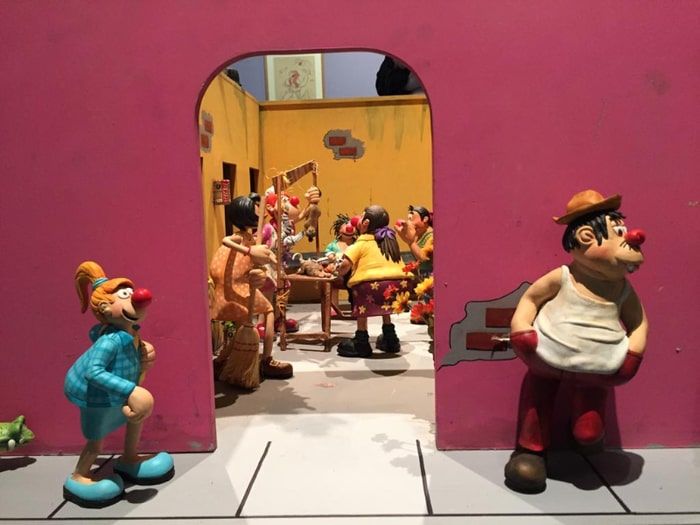Gabriel Vargas; chronicler of popular speech
Witness to the popular life of the 20th century, Gabriel Vargas recreated the language, manners, and customs of a society that was leaving behind the Revolution.

Alubita Salpicón, Satán Carroña, Boba Licona and Avelino Pilongano are just some of the characters that accompanied Doña Borola, Don Regino Burrón and their children for 61 years. Do you remember them? Each one represents some archetype of the Mexican people.
"I always liked the people's speech, especially when I was commissioned to do my first works. I didn't know how to make a comic strip, but I knew what the popular language was like. It's not only telling stories but knowing how to say things," explained Gabriel Vargas Bernal, author of one of Mexico's longest-running comic strips: La familia Burrón (The Burrón family, published from 1948 to 2009).
Witness to the popular life of the 20th century, Gabriel Vargas recreated the language, manners, and customs of a society that was leaving behind the Revolution and entering an era of modernization and industrialization.
The characters he depicted became part of the imagination of several generations and even adopted his phrases, such as "está de rechupete" or "a todo mecate". It should also be noted that Doña Borola Tacuche is one of the first great protagonists of the Mexican comic strip and that in several of her strips she even expressed the change of values in the role of women in the mid-twentieth century.
He not only portrayed the middle and lower classes, but he also analyzed them in detail. To do so, she went into the neighborhoods, the barrios... she went from the cafés to the cabarets. Observing and listening were his working methods, from these experiences he would enter his studio and draw his protagonists.
"I took out the simple way of speaking and added something more to the plots, making them more jocular and funny. I find it funny to modify the language"; that ability was admired by Mexican intellectuals such as Sergio Pitol, Carlos Monsiváis, Juan Villoro or Alfonso Reyes, the latter considered Gabriel Vargas "the only Mexican who deserved to occupy a place in the Academy of Language", due to the record he made of popular speech.
He was born in Tulancingo, Hidalgo, and not in Cuajo number chorrocientos chochenta y chocho. When he was four years old, his father died, which made his family move to Mexico City, exactly to Moneda Street in the Historic Center.
His ability for drawing was present throughout his childhood, although he hid it from his mother, who saw no future in his dedication to it. In elementary school he showed great intelligence, at the age of 11 he won an international children's drawing contest in Osaka, Japan, for which he received a scholarship from the Mexican Government to study in Paris, France, but he turned it down to start working at the newspaper Excélsior.
His dedication led him to move up the ranks little by little until he became head of the drawing department. However, his greatest success would come in 1948 when he published La familia Burrón, which has been the longest-running comic strip in Mexico and educated numerous readers at a time when national cinema had not yet reached its Golden Age.
The Burrón family managed to reach a circulation of half a million copies per day.
How did the idea for the comic strip come about? In an interview with Elena Poniatowska he stated:
"To make La familia Burrón, I was inspired by a couple I knew when I was a boy. She was a very tall, bulky woman, she looked like an opera singer; her husband was a lawyer, a little guy, and every day he had to go home from the courthouse to prepare food because his wife was out and about. That's how I got Don Regino, that tough little guy. The lady had the upper hand in everything and took the money from her husband."
Gabriel Vargas stopped drawing his beloved family and the rest of the characters that accompanied them a year before his death, which occurred on May 25, 2010.




